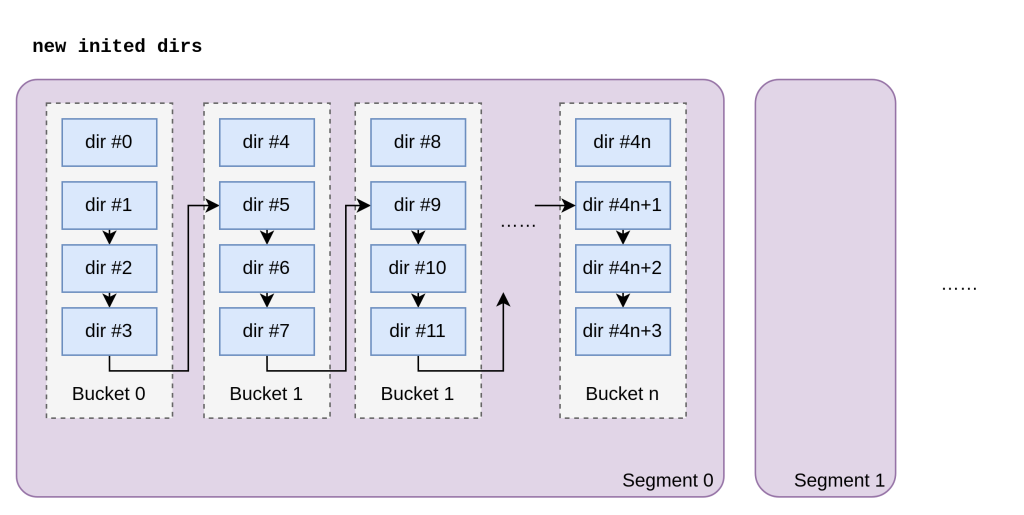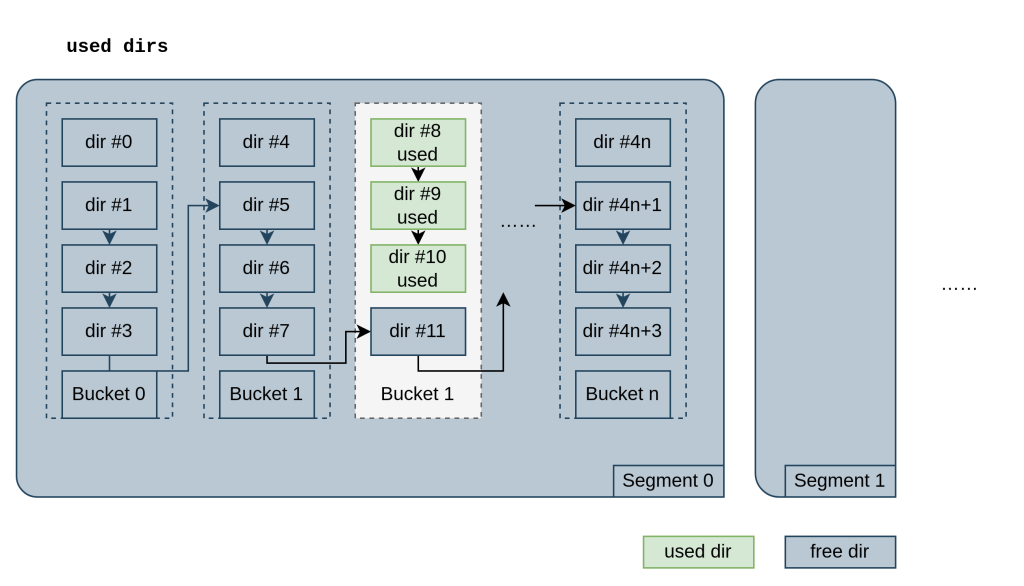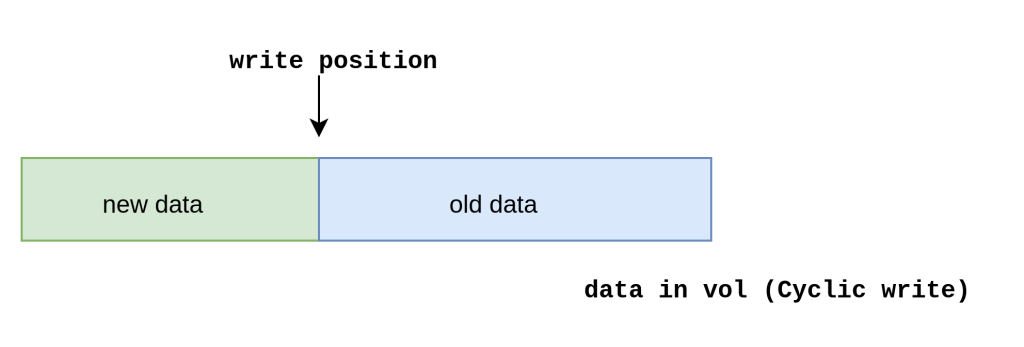近一个月从底层翻阅了 Apache Traffic Server 的磁盘缓存引擎,俞发觉得精妙。另外自己在开发的 web 代理缓存 hitori 中,也确实需要一款大容量磁盘缓存引擎。便实现了一个磁盘缓存引擎库,名字叫做 bakemono。
https://github.com/bocchi-the-cache/bakemono
经过几十个小时的压力测试后,刚刚 release 了 v0.1。
在博客中直接放了项目文档,供读者批评指正。
Table of Contents
bakemono
bakemonois a cache storage engine implemented in Go.
🏁 Design goals
- 🪶 Lightweight: easy to embed in your project
- 🚀 High-performance: high throughput and low latency
- 😀 Code-readable: simple but powerful storage design, easy to read and understand
It is highly inspired by Apache Traffic Server, implemented for our cache-proxy project hitori.
💾 Cache Storage Engine
What is a cache storage engine?
What is the difference from an embeddable k-v database?
Similarities:
They both are:
- key-value storage
- embeddable
- persistent storage on SSD/HDD
Differences:
Cache storage are:
- allowed to drop data when conditions are met
- fault-tolerant (just return a
MISSwhen disk failure happens)
Cache storage is common in CDN (Content Delivery Network). It is used to cache frequently accessed data to reduce the load of backend servers.
The size of cache data is usually ~100TiB per bare-metal server.
🗝️ Usage
Install
You can use bakemono as a pkg in your project.
go get github.com/bocchi-the-cache/bakemonoInit
Then simply import and init a Vol in your code:
func main() {
cfg, err := bakemono.NewDefaultVolOptions("/tmp/bakemono-test.vol", 1024*512*100000, 1024*1024)
if err != nil {
panic(err)
}
v := &bakemono.Vol{}
corrupted, err := v.Init(cfg)
if err != nil {
panic(err)
}
if corrupted {
log.Printf("vol is corrupted, but fixed. ignore this if first time running.")
}
// ...
}Read/Write
func main() {
// ...
// write
err = v.Set([]byte("key"), []byte("value"))
if err != nil {
panic(err)
}
// read
hit, data, err := v.Get([]byte("key"))
if err != nil {
// note: err can be not nil when disk failure happens
// consider it as a MISS when err != nil, or log it to do further processing
panic(err)
}
if !hit {
panic("key should be hit")
}
if string(data) != "value" {
panic("value should be 'value'")
}
log.Printf("value: %s", data)
// close
err = v.Close()
if err != nil {
panic(err)
}
}Note
Concurrency RW is supported.
In this version, they are sharing several RWLocks. We will give more tuning options in the future.
We highly recommend you to read tech design doc before using it in high-load scenarios.
🤖 Tech Design
... until now.
Data Structure
There are 3 data structures in bakemono:
Vol- volume, represents a single file on disk.
- A
Volis what we finally persist on disk. - We will support bare block device in the future.
Chunk- basic unit of your k-v cache data.
- restored on disk.
Dir- directory, a meta index of
Chunk. - All
Dirs are loaded in memory. It is compact.
- directory, a meta index of
🧱 Chunk
Chunk is the basic unit of cache data.
| name | data type | desc |
|---|---|---|
| Magic | uint32 | fixed: 0x00114514 |
| Checksum | uint32 | checksum of DataRaw |
| Key | [3000]byte | fixed size key bytes |
| DataLength | uint32 | |
| HeaderSize | uint32 | fixed: 4096. |
| HeaderChecksum | uint32 | checksum of the above |
| DataRaw | variable bytes | raw data |
We force set chunk header size to 4KB this version, a sector size.
🔖 Dir
Dir is the meta index of Chunk.
Every Chunk has a Dir to represent it in memory.
Dir is always loaded in memory.
type Dir struct {
/*
unsigned int offset : 24; // (0,1:0-7)
unsigned int bigInternal : 2; // (1:8-9)
unsigned int sizeInternal : 6; // (1:10-15)
unsigned int tag : 12; // (2:0-11)
unsigned int phase : 1; // (2:12)
unsigned int head : 1; // (2:13)
unsigned int pinned : 1; // (2:14)
unsigned int token : 1; // (2:15)
unsigned int next : 16; // (3)
unsigned int offset_high : 16;
if unused, raw[2] is `prev`, represents previous dir in freelist.
approx_size = sectorSize(512) * (2**3big) * sizeInternal
*/
raw [5]uint16
}Dir is organized in raw 10 bytes. Use bit operations to get/set fields. This is a design of Apache Traffic Server.
We must save every bit to reduce memory usage.
Note:
- If Dir is unused,
raw[2]isprev, represents previous dir in freelist. To save 1 byte. - Size is not exact. It is
sectorSize(512) * (2**3big) * sizeInternal. Max to represent ~16GB using only 8 bits.
Memory usage:
If we have 100TB data with 1MB chunk size, we only need 100TB/1MB*10B = 1GB memory to index Dirs.
🪣 Segment, Bucket, Freelist
Segment and Bucket are logical groups of Dir.
Segment is a collection of Buckets. Bucket is a collection of dirs.
They are logically organized as below:

-
bucketis group of fixed size4dirs. -
segmenthas max size2^16=65536dirs. -
Dirsis a linked list. -
All non-bucket-head dirs to freelist when initializing, named
freeDirs. -
map[segmentId]dirIdto index the first free dir of each segment.
Note, dirs is an array in memory.
Why segments? We could lock, flush meta per segment.
🗂️ Vol
Vol is the volume on disk. It is the final data structure we persist on disk.
Vol offset calculation:
init options are
type VolOptions struct {
Fp OffsetReaderWriterCloser
FileSize Offset
ChunkAvgSize Offset
FlushMetaInterval time.Duration
}Max dirs size is nearly FileSize/ChunkAvgSize (There are alignment for bucket and segments).
Meaning, we have max FileSize/ChunkAvgSize chunks in this volume.
Vol Multi meta
Meta A/B are designed to be flush alternately. To avoid data loss when power failure happens.
In this version, only use meta A. Will implement multi meta in the future.
Write
We use md5 to hash key:
- key -> segmentId
- key -> bucketId
Once segmentId and bucketId are known:
- try to use bucket-head dir.
- if bucket-head is used, try to use non-bucket-head dir in this bucket.
- if all dirs in this bucket are used, try to grab a free dir from
freeDirs.
When no free dir in freeDirs:
- rebuild
freeDirsin this segment. - if still no free dir, purge 10% buckets randomly in this segment.
Once get free dir, unlink it from freeDirs and link it as tail of bucket. Write chunk offset, key and other metadata to dir.
Then, write data to disk.
- rw lock the
Segment - write data to data range of
Vol
Note: no hard limit for data size. But should avoid too large data, hold write lock too long.
Chunk data is cyclic, we will overwrite old data when disk is full. The advantage is
- sequential write is faster
- no need to delete old data
- no need to compact data in background
- no write amplification
Read
We use md5 to hash key same as write
- key -> segmentId
- key -> bucketId
Once segmentId and bucketId are known:
- find
keydir linked list. - if not found, return
MISS - if found, read
Chunkdata from disk. - Check again the
full keyinChunk.
Due to the only 12 bit tag in dir, we have to check key again in Chunk.
Collision is possible, but will be much less when file size is large(>100GB).
There are a little read amplification due to approx size of Dir. But it is acceptable.
Metadata Persistence
Flush/restore meta A with FlushMetaInterval.
Will implement multi meta in the future.
Performance
Still in progress.
On our initial testing with HDD, it is nearly same to do fio test on hard disk.
Other Information
Roadmap
- We are working on basic caching functions in this stage.
- When caching functions are stable, we will concentrate on performance tuning.
Name Origin
Bakemono is a Japanese word meaning "monster". In Chinese, it is called "贵物".
We wish it could be a lightweight but high-performance cache storage engine like a "bakemono"!
Logo
The logo is designed by Yige.
Who are bocchi-the-cache?
We are a group of engineers who are interested in storage, networking and Go programming language.
We are excited to build projects using new technologies and share our experience with others.





